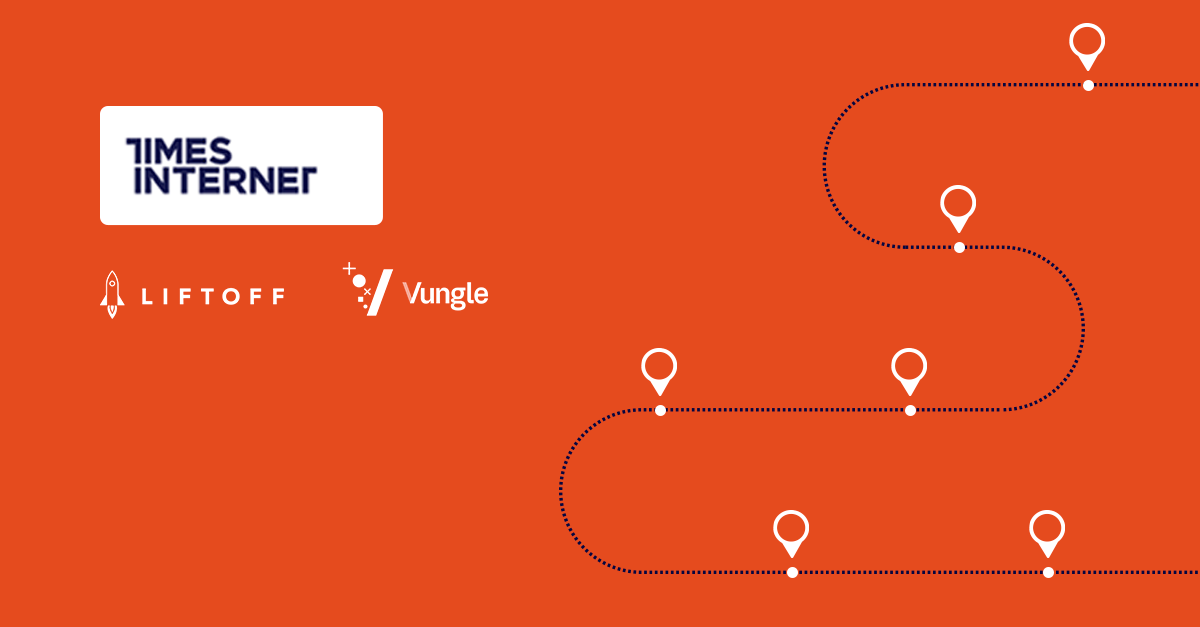Vivek Girotra is Vice President of Growth Marketing at Times Internet, one of India’s largest digital products companies. At Times Internet, Vivek is launching a new fintech product for expats and leads marketing covering user acquisition, brand and CRM. Previously, Vivek has worked across three continents and led growth for several firms, including 21st Century Fox and MachineZone.
The mobile industry has covered SKAdNetwork extensively over the last two years, and there is little to add to the subject. Many experts now choose to focus instead on post-install behavior as the future of post-ATT advertising. The same is true of this blog. In it, I share best practices from past experiences and provide key pointers that will help you optimize your post-acquisition strategy.
1. Focus on the long game
In paid acquisition, app marketers often see a linear relationship between switching on a channel (input) and corresponding revenue (output). Retention, however, is a game of inches, and it compounds over time. To keep retention on track, I look to James Clear’s framework of getting 1% better every day. A 1% improvement a day might seem insignificant, but consistently achieved over the course of a year, it means improving performance roughly 38x. In other words, a successful team focuses on making incremental improvements that add up over time. This can be changing the pre-header copy in an email, minor changes to the paywall CTA, adding badge numbers to push notifications, or simply cleaning up the grammar in your CRM activity.
Source: jamesclear.com
2. Beware of hidden KPI costs
As teams expand, they naturally drift into silos. They start to optimize for goals that directly conflict with each other. A notable example is when a LinkedIn email arrives, informing the user of a new message without revealing what the message is. This UX pattern can successfully get users to open the app, improve Linkedin’s MAU, and help meet KPIs. But here’s the dark side—it’s not consumer-friendly. The practice creates a frustrating user experience and negatively affects LinkedIn's net promoter score. To ensure your team is optimizing for the right variables, consider adopting these steps:
- Align incentive systems across different teams
- Create regular check-ins between UA, product and CRM teams
- Create cross-functional teams to work on larger initiatives
Source: Google
3. Find the “why” behind the “what”
Retention is all about data and using data to tell the right story. Don’t focus only on measuring core actions. It is also important to find the “why” that drives each action. For example, in an app within the Times Internet portfolio, we saw a large spike in referrals and subsequently, a dip in M1 retention for that cohort. This was counter-intuitive, as referral traffic tends to mirror the quality of organic users. Upon investigation, we found that many users had discovered how to game our referral offer. They exchanged tips in YouTube videos and Facebook groups, which led to the sudden influx of new referral users. Since the users were only interested in claiming the referral rewards, they churned off almost immediately, causing retention for that cohort to tank. The situation taught our team to create a longer-term product initiative to minimize damage from similar events in the future.
4. Find the quickest path to a direct relationship
With the elimination of IDFA, it is more important than ever to establish a one-on-one relationship with your customer. If your sign-up/install rate is 70% and you only ask for push notification permissions after the sign-up, you will lose 30% of that audience right off the bat. It is crucial to reduce the friction at the top of the funnel and make onboarding seamless. There are many ways to do this. For example, you might skip the username/password step completely and use the phone number as the login (this has the additional benefit of introducing SMS as a CRM channel). Another good sign-up option is testing Google SSO to see if it converts better than your current choices.
5. Engagement does not always equal retention
To cut out the noise, identify indicators that improve the retention metric using regression analysis. Times Internet owns some of the largest news platforms in the world. Many users come in through search engines looking for specific news items, but they are low-affinity users, and their engagement is not an indicator of stickiness or loyalty to the brand. On the other hand, users who download the app are much more likely to have higher retention. They made an investment by downloading the app, and this provides publishers an opportunity to communicate directly with these users through CRM channels. This follows Cialdini’s principle of commitment and consistency—people are more likely to follow through on new actions if they have already made a show of commitment.
6. Pick your battles
One of the better indicators of product-market fit is the flatlining of the retention curve after a particular window. Gaming apps see brutal churn rates—even a good D30 retention metric for mid-core games is around 10%. This is perfectly fine and can make for a very successful business if your product can provide sustained value and increase the LTV of the retained users.
Source: BrianBalfour.com
Takeaways
Overall, whatever your strategy is, aim for consistency rather than perfection. I highly recommend app marketers make marginal improvements each day that compound over time. I hope my learnings can help mobile app marketers optimize their post-acquisition strategy. To conclude, here’s a summary of my tips:
- Align incentives across teams, so everyone optimizes towards the same goals.
- Use qualitative indicators to find the “why” behind the quantitative data.
- Improve onboarding. Start users on their CRM journey sooner rather than later.
- Create positive friction to get users invested in your app—and let go of low-intent users.
- Keep power users happy to increase their lifetime value.
